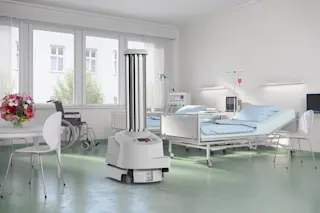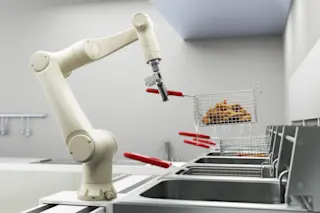As health care workers, grocery store employees and delivery truck drivers repeatedly expose themselves to COVID-19, one thing has become clear to engineers: Robots could be handling some of these dangerous tasks.
In an editorial in Science Robotics, researchers argue that many essential but risky jobs could be performed by robots during health emergencies. Some early technologies already manage a few of these tasks, like sanitizing surfaces, the 13 scientists write. But, for the most part, technological substitutes for jobs like contaminated waste handling or patient throat swabbing still need financial and institutional backing to get up and running.
“Clearly robots are here for taking some of those risks away from people,” said Guang-Zhong Yang, roboticist with Shanghai Jiao Tong University in China and co-author of the editorial, on a press call this week. Whether robotics researchers can sustain funding and interest long enough to get those devices ready for ...














